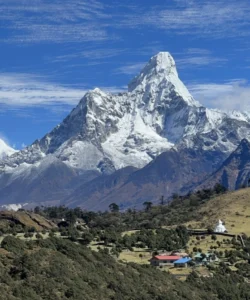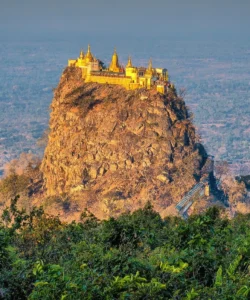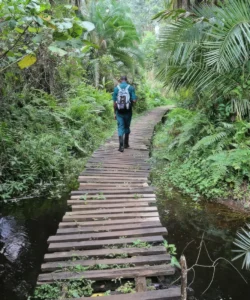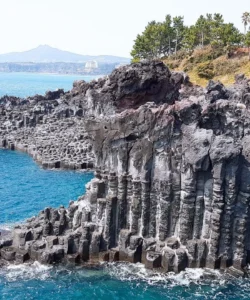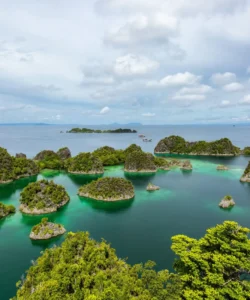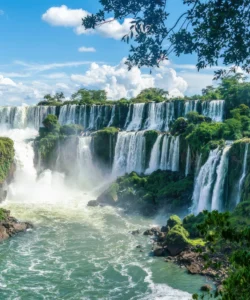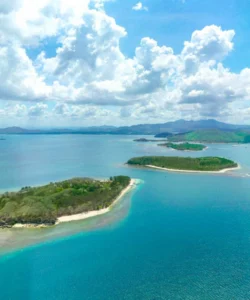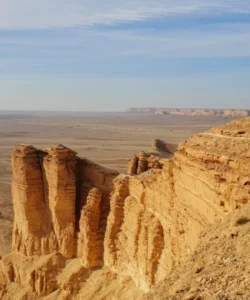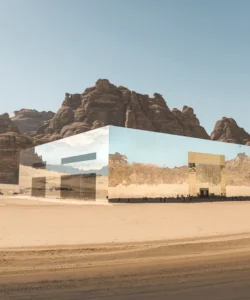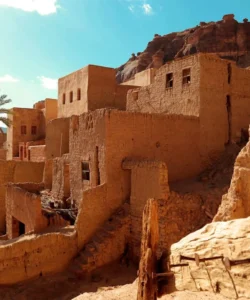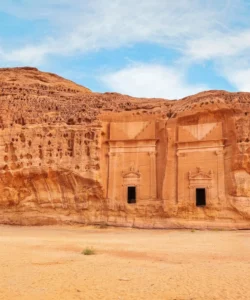The Edge of the World, locally known as Jebel Fihrayn, is a dramatic and awe-inspiring natural wonder located near Riyadh, Saudi Arabia. It is a geological marvel, famous for its towering cliffs that offer breathtaking panoramic views of the vast, uninterrupted desert landscape below, creating an unforgettable feeling of standing at the very brink of the Earth.
Name: Edge of the World (Arabic: حافة العالم, Ḥāfat al-ʿĀlam; also Jebel Fihrayn)
Address: The cliffs are located approximately 90-120 kilometers (56-75 miles) northwest of Riyadh, at the end of the 800-kilometer-long Tuwaiq Escarpment.
How to Get There:
Access to the Edge of the World is an off-road adventure and requires a specific mode of transport. Public transportation and regular rental cars are not suitable for the journey.
- By Air: The closest international airport is King Khalid International Airport (RUH) in Riyadh. From Riyadh, you would travel by road.
- By 4×4 Vehicle (Recommended): The journey from Riyadh takes approximately 1.5 to 2.5 hours each way. The first part is on a paved highway, but the final portion is on unmarked, rocky dirt roads that are difficult to navigate and often have loose gravel or soft sand. A 4×4 vehicle is essential for this part of the trip.
- Organized Tours: Most visitors access the Edge of the World through organized tours from Riyadh. These tours typically include:
- 4×4 transport: A guide will pick you up from a designated meeting point in Riyadh and drive you to the site.
- Guided hiking: A professional guide will lead you to the best viewpoints along the cliffs.
- Sunset viewing and stargazing: Many tours are timed to include the spectacular sunset from the cliffs, followed by dinner and stargazing in the remote desert, where light pollution is minimal.
- Self-Driving: While some experienced drivers attempt to self-drive with a 4×4, it’s not officially recommended due to the difficulty of the unmarked tracks. It’s also wise to travel with at least one other vehicle in case of getting stuck.
- Best Time to Visit: The cooler months from October to April are ideal, as temperatures in the Saudi desert are extremely hot from May to September. Late afternoon is the most popular time to visit, to witness the sunset from the cliffs.
Landscape and Architecture:
The “architecture” of the Edge of the World is entirely natural, a stunning geological formation sculpted by tectonic forces and erosion.
- Tuwaiq Escarpment: The site is a magnificent cliff formation that marks the dramatic end of the Tuwaiq Mountain range, an 800-kilometer-long escarpment that runs through the Najd Plateau.
- Towering Cliffs: The cliffs at the Edge of the World rise to a height of approximately 300 meters (about 1,000 feet) above the desert floor. The sheer drop creates an exhilarating and vertigo-inducing sensation of looking down from an immense height.
- Vast Desert Plain: From the top of the cliffs, you have an uninterrupted, panoramic view of a massive, flat desert plain that stretches endlessly to the horizon. This vast expanse of rocky and sandy desert below reinforces the illusion of being at the edge of a great chasm.
- Geological Origin: The cliffs were formed by the tectonic movement of the Arabian Plate, a process that created a massive rift valley to the west (the Red Sea). The horizontal sedimentary rock layers of the escarpment were uplifted and then eroded over millennia by wind and water, leaving behind the dramatic cliffs.
- Ancient Riverbed: The desert plain below was once the bed of an ancient river that flowed through the region, a geological history visible in the layers of the rock.
- Fossil Evidence: The rock layers in the area contain fossilized marine life (ammonites, snails, etc.), providing evidence that this entire region was once a shallow ocean floor millions of years ago.
- Canyons and Valleys: The trekking trails and some viewpoints lead into smaller canyons and valleys that cut into the cliffs, offering a different perspective of the geological formations.
- “Bat Cave” (nearby): A nearby site, often visited on tours, is a small natural cave with a colony of bats, adding a touch of unique wildlife.
- No Man-Made Structures: There is no permanent man-made “architecture” at the Edge of the World itself. The appeal lies entirely in its raw, untouched natural beauty.
What Makes It Famous:
- Breathtaking Panoramic Views: The Edge of the World is globally famous for its awe-inspiring, uninterrupted panoramic views from atop its towering cliffs, creating an illusion of standing at the end of the Earth.
- Unique Geological Formation: It is a unique geological wonder, marking the end of a vast mountain range and providing a dramatic example of an escarpment formed by tectonic forces and subsequent erosion.
- Off-Road Adventure: The adventurous off-road journey required to reach the site is a significant part of its fame, appealing to travelers who seek a thrilling desert expedition.
- Photographic Destination: The dramatic cliffs, the vast desert plain, and the spectacular sunrises and sunsets make it a prime destination for photographers and a popular site for social media.
- Stargazing in the Desert: Its remote location, far from the light pollution of Riyadh, makes it an exceptional spot for stargazing, often included in evening tours.
- Sense of Solitude and Awe: The raw, untouched nature of the landscape and the profound silence of the desert evoke a sense of deep solitude and awe, a powerful human experience.
- Recently Accessible Destination: Like many other sites in Saudi Arabia, its recent accessibility to international tourists has made it a particularly intriguing and exciting destination of new discovery.
Differences from Some Other Wonders:
- Geological Escarpment vs. Canyon: While often compared to the Grand Canyon, the Edge of the World is a cliff formation at the end of a long mountain range (an escarpment), where you stand at the top looking down at a flat plain, rather than a massive chasm carved by a river with cliffs on both sides. This singular, continuous cliff face is its defining characteristic.
- “Edge of the World” Illusion: Its fame is based on a specific visual phenomenon: the illusion of the “edge of the world” from a high viewpoint, created by the absence of a visible horizon, which is a unique experiential element.
- Road-Based Off-Road Access: Unlike many natural wonders that require extensive hiking (e.g., Mount Everest Base Camp, Valley of Flowers) or are accessed by regular roads/vehicles, the Edge of the World’s access is via a specific type of off-road vehicle (4×4) to a remote location, a blend of driving and wilderness adventure.
- Lack of Historical or Architectural Structures: Unlike ancient sites (Hegra, AlUla Old Town) or monumental man-made landmarks, the Edge of the World’s “wonder” is entirely its natural, raw geological beauty, without any human-built structures or historical ruins to explore.
- Focus on a Specific Viewing Experience: While other sites might have diverse attractions, the Edge of the World’s primary appeal is concentrated on the experience of standing at the cliff’s edge and the panoramic view it provides, often with sunset and stargazing as a core part of the experience.
- Extremes of Desert Environment: It embodies the stark beauty of the Arabian desert’s geological formations and extreme climate in a way that is distinctly different from the lush valleys of other wonders (e.g., Neelum Valley, Hunza Valley).
- Fossilized Marine Life: The presence of marine fossils in the rock layers adds a unique geological narrative of how the land itself has transformed from ocean floor to desert plateau.
Edge of the World Photos:

























